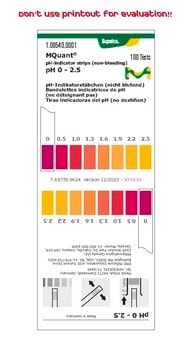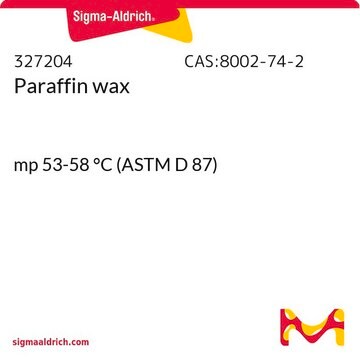Acetone is considered moderately hygroscopic compared to ethanol. For information on the rate of water absorption by acetone versus ethanol and other commonly used laboratory solvents, a publication in the Journal of Chromatographic Science, Volume 20, Issue 5, May 1982, Pages 213-217 may serve as a valuable reference.
To dry acetone, salts can be used. Additionally, there are drying reagents and acetone products available with low water content, such as 179124 ACS reagent (≥99.5%), 650501 HPLC Plus (≥99.9%), and AX0116 OmniSolv®.
AX0116
Aceton
OmniSolv®
Synonym(e):
Dimethyl Ketone, 2-Propanone
About This Item
Empfohlene Produkte
Agentur
suitable for DIN 38407-42
suitable for EPA ACB B21-02
Qualitätsniveau
Dampfdichte
2 (vs air)
Dampfdruck
184 mmHg ( 20 °C)
Produktlinie
OmniSolv®
Assay
≥99.5% (corrected for water content, GC)
Form
liquid
Expl.-Gr.
13.2 %
Methode(n)
HPLC: suitable
LC/MS: suitable
Verunreinigungen
≤0.3 μeq/g Titrable acid
≤0.5% Water (H2O)
≤2 ng/L Capillary ECD responsive substances (as PCNB)
≤3 μg/L Capillary FID responsive substances (as decane)
Abdampfrückstand
≤1 ppm
Farbe
APHA: ≤10
Brechungsindex
n20/D 1.359 (lit.)
pH-Wert
5-6 (20 °C, 395 g/L in H2O)
bp
56 °C/760 mmHg (lit.)
mp (Schmelzpunkt)
−94 °C (lit.)
Übergangstemp.
flash point <-20 °C
Dichte
0.791 g/mL at 25 °C (lit.)
UV cutoff
≤329 nm
UV-Absorption
λ: 329 nm Amax: ≤1.00
λ: 330 nm Amax: ≤0.80
λ: 335 nm Amax: ≤0.30
λ: 340 nm Amax: ≤0.06
λ: 350 nm Amax: ≤0.005
λ: 400 nm Amax: ≤0.005
Anwendung(en)
PFAS testing
Format
neat
Versandbedingung
ambient
Lagertemp.
room temp
SMILES String
CC(C)=O
InChI
1S/C3H6O/c1-3(2)4/h1-2H3
InChIKey
CSCPPACGZOOCGX-UHFFFAOYSA-N
Suchen Sie nach ähnlichen Produkten? Aufrufen Leitfaden zum Produktvergleich
Anwendung
Verpackung
As a global leader in lab reagents, we are constantly looking for new ways to optimize the safety of our products. The newly developed 4L solvent bottle design features advanced sealing technology that eliminates leaks to make the handling of solvents safer and more convenient than ever before.
See all the new features here!
Angaben zur Herstellung
Hinweis zur Analyse
Rechtliche Hinweise
Signalwort
Danger
H-Sätze
Gefahreneinstufungen
Eye Irrit. 2 - Flam. Liq. 2 - STOT SE 3
Zielorgane
Central nervous system
Zusätzliche Gefahrenhinweise
Lagerklassenschlüssel
3 - Flammable liquids
WGK
WGK 1
Flammpunkt (°F)
1.4 °F - closed cup
Flammpunkt (°C)
-17.0 °C - closed cup
Analysenzertifikate (COA)
Suchen Sie nach Analysenzertifikate (COA), indem Sie die Lot-/Chargennummer des Produkts eingeben. Lot- und Chargennummern sind auf dem Produktetikett hinter den Wörtern ‘Lot’ oder ‘Batch’ (Lot oder Charge) zu finden.
Besitzen Sie dieses Produkt bereits?
In der Dokumentenbibliothek finden Sie die Dokumentation zu den Produkten, die Sie kürzlich erworben haben.
Artikel
An accurate and precise HPLC-PDA measurement of 32 cannabinoids and 2 cannflavins in hemp samples using a single extraction in less than 32 minutes.
-
Does acetone absorb water like ethanol? and Is salted acetone necessary for plant tissue dehydration?
1 Antwort-
Hilfreich?
-
Aktive Filter
Unser Team von Wissenschaftlern verfügt über Erfahrung in allen Forschungsbereichen einschließlich Life Science, Materialwissenschaften, chemischer Synthese, Chromatographie, Analytik und vielen mehr..
Setzen Sie sich mit dem technischen Dienst in Verbindung.










